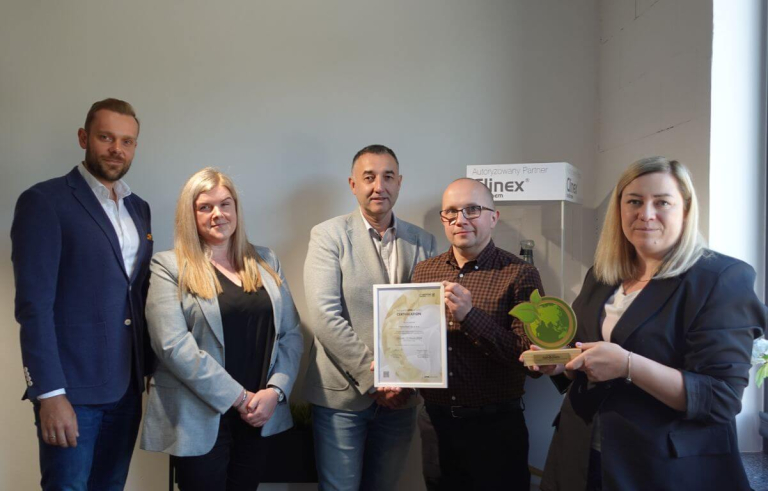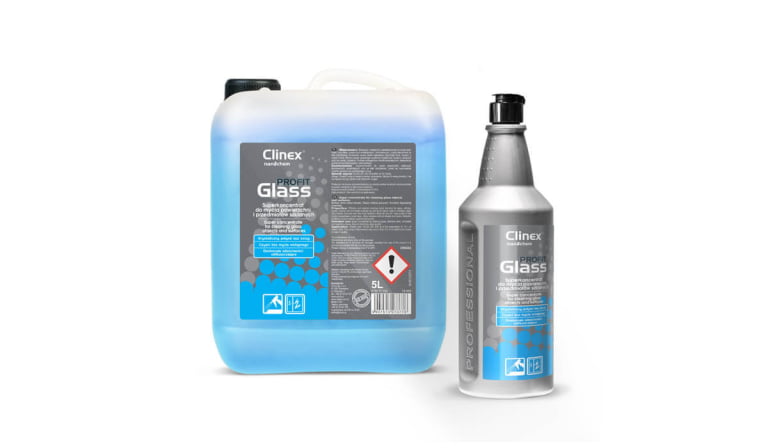Segregating waste is the most basic and down-to-earth way of caring for the environment. It is part of our everyday life, repetitive to the point of boredom, and usually unpleasant. Because of this, we often forget how to do it right. How we dispose of waste from our household has a huge impact on the level of recycling.
Garbage is a huge problem and we all know it. World Bank estimates show that globally we produce approximately 2.01 billion tons of solid waste annually. However, a very small percentage of it is properly processed or disposed of. The situation is similar on the Vistula River.
Recycling in Poland

In 2000, we recorded a 2% recycling rate of municipal waste , and in 2020 it was already 39%. That’s a big increase. However, Poland must repeat this achievement in the next 12 years. The current waste management model is unable to achieve the EU’s goals. By 2035, we should achieve a 65% recycling rate for municipal waste. This will not be possible with the strategies used so far. Improving technology, strategies for better sorting of mixed waste and introducing a deposit system are not everything. The social aspect is a very important factor.
We, consumers, get rid of the contents of the packaging or use up the product and end up with waste. Waste must be passed on (i.e. simply thrown away) in such a way that it has the greatest possible chance of being processed or recovered.
Ecological education, tips on correct segregation and stickers on bins are, of course, important activities. However, they do not bring as good results as expected. For this reason, as Clinex, we remind you of the basic principles of waste segregation and give tips on how to sort wisely!
1. Distinguish between raw materials and waste
The most important rule of waste segregation and a change of approach: not all garbage is waste! Most of the contents of our baskets are actually materials. They can be used to make another package, jar or bag. When looking at what you throw away, double-check that you are properly separating valuable raw materials from dirty, damaged waste.
2. Search for raw materials, group

You already know how important it is to separate dry, clean raw materials from dirty waste. The next step in waste segregation is to ensure that different types of raw materials are grouped separately: glass, paper, metal, plastic. These are the basic and most common materials in our homes, and the products we buy in stores are usually packed using these raw materials.
3. Dispose of a valuable raw material: glass separately
Glass is one of the most easily processed materials and is 100% recyclable. Currently, approximately 70% of glass packaging in Poland is recycled . This is still not enough, but changes in the deposit system are expected to significantly improve this result. We throw white and colored glass into the green glass container: bottles, jars, cosmetics packaging. We do not accept mirrors, crystals (e.g. from tableware), earthenware or porcelain!
Metal cap on a jar? Unscrew it before throwing away for easy recycling. If you forget, nothing is lost – the machines in the sorting room will be able to separate them from the glass.
What happens to glass after being thrown into the green container?
Once the glass is collected from the containers, it is transported to a recycling plant. Glass is sorted by color. Then they are cleaned of impurities such as labels, caps, etc. Pieces of glass are melted in furnaces and the finished liquid is formed into molds to produce new glass packaging.
4. Throw away a valuable raw material: paper separately

Paper is a very valuable material. This is because it is ubiquitous in our lives: newspapers, books, notebooks, notebooks, packaging. Nowadays, paper is produced from cellulose fibers or wood pulp fibers, which are obtained by grinding and grinding wooden logs. Due to how valuable trees are on our planet, paper recovery is very important! In European Union countries, on average 70% of waste paper is recovered. In Poland, this result is unfortunately much weaker – only 42%.
Only clean and dry paper should be put into the blue container. Paper that is wet, especially grease-stained, cannot be used here! This is waste that we throw away.
What happens to paper when it is thrown into the blue bin?
The collected material is sorted at recycling points, cleaned (e.g. from staples), and then shredded and soaked. Cellulose pulp is formed from it, cleaned and bleached, and then made into paper sheets.
5. Dispose of a valuable raw material: metal separately
Producing metals from deposits is time-consuming and expensive. It is also a big burden on the environment. To extract industrially needed metals and non-metals from ores requires a huge amount of energy and water. Additionally, these processes are accompanied by high emissions of pollutants and carbon dioxide. Metal recovery is therefore an effective and most rational way of obtaining them. At the same time, it helps protect the environment and combat climate change. In Poland, metal is thrown into the yellow container together with plastic . We throw here aluminum beverage and juice cans, canned food cans, aluminum foil, non-ferrous metals, bottle caps, and jar caps.
What happens to metal when it is thrown into the yellow container?
Metal and plastic go to a waste sorting plant, where the metal is separated and cleaned. Purified metals in the form of semi-finished products are then sent to steelworks, foundries and production plants from various industries, where they are transformed into new products.
6. Throw away a valuable raw material: plastic separately (and reduce as much as you can!)

The last and relatively newest raw material is plastic. It has made life much easier for people, but it has become a great threat to the planet. Plastic production began on a large scale in the 20th century, specifically in the 1930s. 20th century. Every year, 300 million tons of plastic waste are produced – of which only 10% is actually recovered. This means that plastic, although convenient (light, durable, cheap), is the worst raw material. All because there is too much of it and it cannot be recovered effectively. What can we do about it?
Therefore, we throw away any plastic that is clean and does not contain any other materials, such as rubber or foil, into the yellow container .
What happens to plastic after we throw it into the yellow container? Plastic, in short, is shredded and cleaned in sorting plants. In the next step, it is melted and processed into granules that can be used to produce another product.
However, not every type of plastic can be processed, it is energy-consuming and technologically difficult. Additionally, a product made from processed granules is often of lower quality. Recycling plastic is therefore not as effective as other raw materials.
7. Take care of your compost!
Segregation of biodegradable waste is mandatory throughout Poland from the beginning of 2021. By separating bio waste from plastic, glass or other garbage, they can decompose freely. This is a natural method of waste management, which turns into compost, a substance that improves the properties of the soil!
Where to dispose of biodegradable waste? According to the rules of waste segregation, it should be placed in a brown waste container.
Bio-waste cannot be disposed of in bags or plastic bags! They ensure comfort and hygiene. However, during waste processing, they must be broken down and separated from organic residues. Pieces of foil, even after professional processing, can get into bio-waste, making it impossible to compost it. It is better to use paper bags and packaging. Preferably ones that we already have at home, e.g. from bread or from an old newspaper.
We throw away vegetable and fruit waste, shredded tree and shrub branches, cut grass, leaves, cut and potted flowers (without soil), bread, mushrooms, coffee and tea grounds (without bags), and egg shells into the bio container. We don’t throw away meat or bones!
8. When recovery is impossible – limit mixed waste
Mixed waste is a group of waste from which we are no longer able to recover the raw materials used to produce it. This is everything that cannot be recovered in the recycling process. We throw such garbage into black containers. There should be as little of this type of waste in our home as possible.
What are we throwing away here? The list is long and includes everything that is not a pure raw material, which we described above. These will include leftovers from meat production, frying oil, contents of vacuum cleaner bags, cigarette butts, shop receipts, broken or damaged porcelain dishes, used diapers, old towels or paper tissues, and e.g. litter from the litter box.
Importantly, mixed waste is also sorted so that as little of it as possible ends up in a landfill.
9. Electrical equipment or clothes? Take it to a collection point
You no longer need clothes or a broken washing machine or phone? The worst thing you can do is throw it in the trash. This type of “waste” can be repaired or given to someone who will reuse it. Always take electronic waste to the PSZOK point or electronic waste collection point in your city or commune. Companies such as ElektroEko also collect them. However, you can donate clothes to homeless shelters. You can also use the “Clothes to Donate” platform or sell on platforms such as OLX and Vinted.
10. Change small habits

As you already know from the article, waste segregation is important, and the worst waste is that which is not a raw material or is a “difficult” raw material – i.e. plastic. Just try to give up on it: plastic bags, nets, takeaway boxes. Carry your shopping bags, pack them into jars, wash and reuse the plastic bags you have at home.
To sum up, waste segregation should not only be our responsibility, but also a conscious choice to protect the environment. Following recycling practices such as those outlined in this article are crucial to conserving natural resources and minimizing our negative impact on the planet. As Clinex, we know this well. That’s why we put environmental protection at the heart of our mission. We are also a partner of Planet Heroes and World Cleanup Day, which promote pro-ecological activities and education in responsible waste management. All this to work for a better tomorrow, where recycling will become an integral part of our everyday life and our planet can breathe a sigh of relief.
Find out how else we promote ecology:






